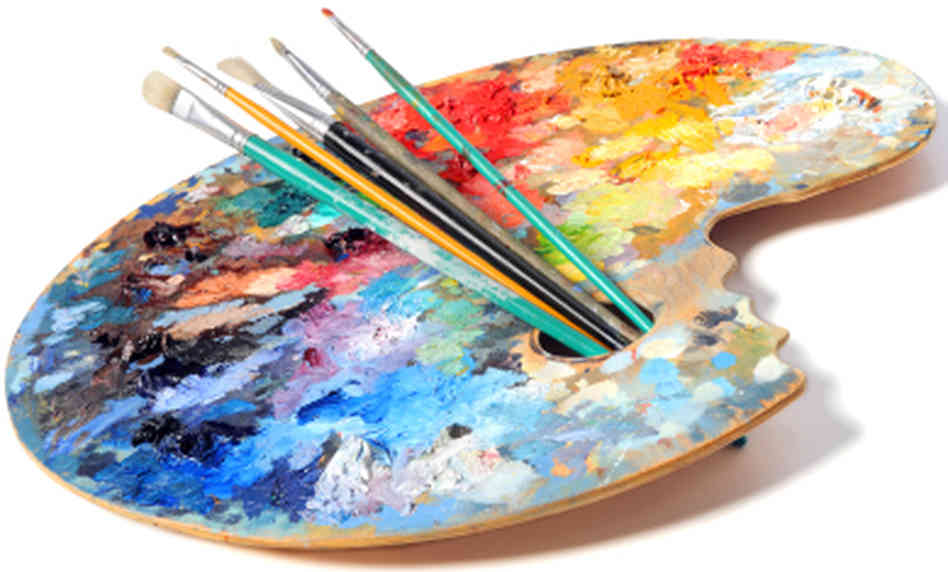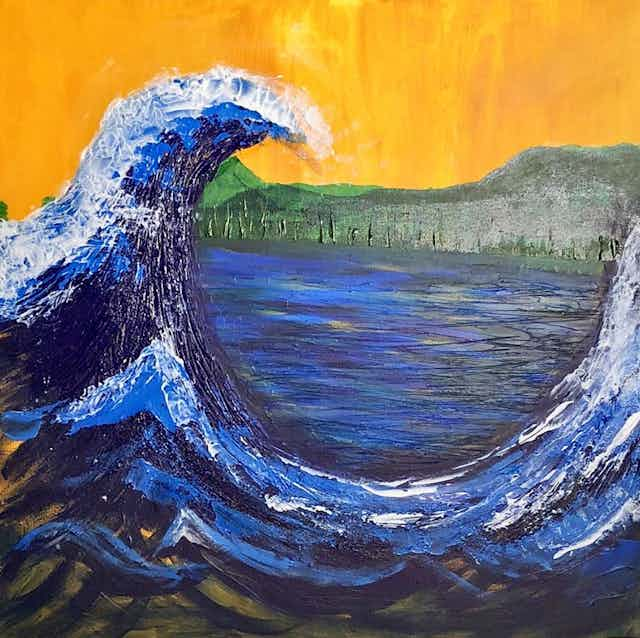The Advancement of Trump Art: From Very Early Critiques to Contemporary Viewpoints
The Advancement of Trump Art: From Very Early Critiques to Contemporary Viewpoints
Blog Article
Starting an Aesthetic Trip Through the Lyrical Analyses of Nature in Impressionist Landscapes
Each brushstroke, each play of light and shadow, and each shade option in their jobs speaks volumes about the artists' deep connection to nature and their capacity to equate its charm onto the canvas. As we explore the lyrical analyses of nature in Stylist landscapes, we are invited to immerse ourselves in a world where reality and emotion intertwine, providing a glance into the musicians' profound appreciation for the all-natural world.
The Fascinating Brushstrokes of Claude Monet
Claude Monet's proficiency of brushstrokes goes beyond plain strategy, imbuing his landscapes with a heavenly quality that mesmerizes and mesmerizes customers - trump art. His innovative use color and light, combined with his distinctive brushwork, develops a feeling of motion and life within his paints. Monet's prominent collection of jobs showing water lilies and his legendary haystacks showcase his capacity to capture the fleeting impacts of light and ambience

Embracing Light and Darkness With Camille Pissarro
Symbolizing a similar respect for the interplay of light and shadow, Camille Pissarro's imaginative vision unravels as a harmonious expedition of the natural world's luminous nuances. Pissarro, a key figure in the Impressionist activity, masterfully recorded the dynamic connection between light and darkness in his landscapes. His proficient use color and brushwork enabled him to communicate the refined shifts in light that specify different times of day and periods.
Pissarro's paints usually include dappled sunshine filtering system through leaves, casting intricate patterns of light and shadow on the planet below. In works such as "Hoar Frost, the Impact of Snow, Pontoise," Pissarro skillfully depicts the crisp illumination of wintertime sunshine juxtaposed with the trendy darkness that specify the snowy landscape. By embracing both light and darkness in his compositions, Pissarro welcomes customers to submerse themselves in the natural charm and short-term results of light worldwide around them.

Via Pissarro's jobs, we are reminded of the transformative power of light and shadow, welcoming us to pause and value the short lived moments of beauty existing in the day-to-day landscapes that surround us.
A Harmony of Color Styles by Edgar Degas
Edgar Degas manages a lively harmony of colors in his skillful art work, instilling his structures with a vibrant interplay of hues that captivate the customer's gaze. Understood largely for his ballet professional dancers and intimate scenes of Parisian life, Degas expertly manipulated colors to convey mood and movement in his paints. trump art. His use vibrant, different colors and refined tonal variations developed a sense of deepness and vibrancy within his jobs
Degas' color palette typically consisted of abundant blues, deep greens, and warm oranges, which he used with certain brushstrokes to record the essence of his topics. Whether representing a ballerina mid-performance or a team of good friends speaking at a coffee shop, Degas' shades not just depicted the scene however likewise stimulated a sense of emotion and energy.
In Addition, Degas' trial and error with light and darkness included an additional layer of complexity to his color make-ups, boosting the overall environment of his paints (trump art). With his proficient adjustment of color, Degas produced an aesthetic harmony that continues to resonate with audiences today
Discovering Nature's Peacefulness With Berthe Morisot
Berthe Morisot's imaginative vision uses a calm separation from the vibrant color harmonies of Edgar Degas, as she records the harmony of nature in her expressive landscapes. Known for her fragile brushwork and intimate portrayals of day-to-day life, Morisot's landscapes emanate a feeling of peace and harmony.
Morisot's paintings usually feature soft, low-key tones that share a sense of calmness and calmness. Her jobs, such as "The Cradle" and "Summertime's Day," showcase her capability to record the subtle appeal of nature in a manner that is both contemplative and soothing to the viewer.
Unlike several of her Stylist counterparts that concentrated on strong shades and vibrant make-ups, More Bonuses Morisot chose to produce mild, introspective scenes that invite the viewer to show and stop. website link With her skillful usage of light and darkness, Morisot develops a sense of peace that resonates with the visitor on a deep emotional degree.
The Psychological Landscapes of Vincent Van Gogh
Vincent Van Gogh's landscapes strongly share a deepness of feeling through their vibrant brushwork and meaningful use of shade. The Dutch post-impressionist artist is renowned for his capability to record extreme and raw feelings in his paintings, transcending standard depictions of nature. Van Gogh's tumultuous personal life, noted by psychological wellness struggles, substantially affected his art, infusing his landscapes with a sense of unease, sorrowful, or liveliness.
In works such as "Starry Night" and "Wheatfield with Crows," Van Gogh's swirling brushstrokes and vibrant color choices stimulate an extensive psychological feedback from visitors. The unstable skies and agitated landscapes in his paints reflect his internal turmoil and emotional disturbance, inviting viewers to explore the intricacies of his subconscious.
Van Gogh's one-of-a-kind aesthetic language, defined by exaggerated point of views and bold use of color, creates landscapes that reverberate with viewers on a deeply emotional degree. Through his art, Van Gogh welcomes us to see nature not simply as an exterior reality but as a mirror of our innermost sensations and emotions.
Conclusion
To conclude, the impressionist landscapes of musicians such as Claude Monet, Camille Pissarro, Edgar Degas, Berthe Morisot, and Vincent Van Gogh provide a captivating and unique aesthetic analysis of nature. Via their use brushstrokes, shade, light, and feeling, these musicians have actually developed a harmony of images that evoke a sense of tranquility and beauty in the natural globe. Their works proceed to influence and charm audiences with their lyrical interpretations of the landscapes around us.
Each brushstroke, each play of light and darkness, and each color choice in their jobs speaks quantities regarding the musicians' deep connection to nature Read More Here and their ability to equate its appeal onto the canvas. His innovative use of color and light, integrated with his distinct brushwork, develops a feeling of motion and life within his paintings. His proficient usage of color and brushwork allowed him to communicate the refined shifts in light that define different times of day and periods.

Report this page